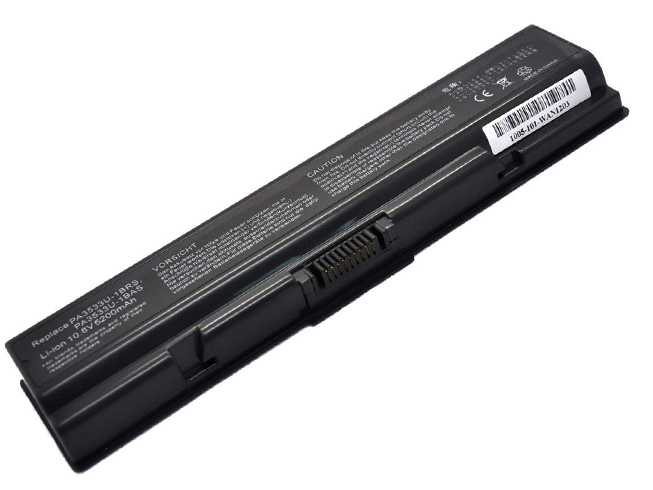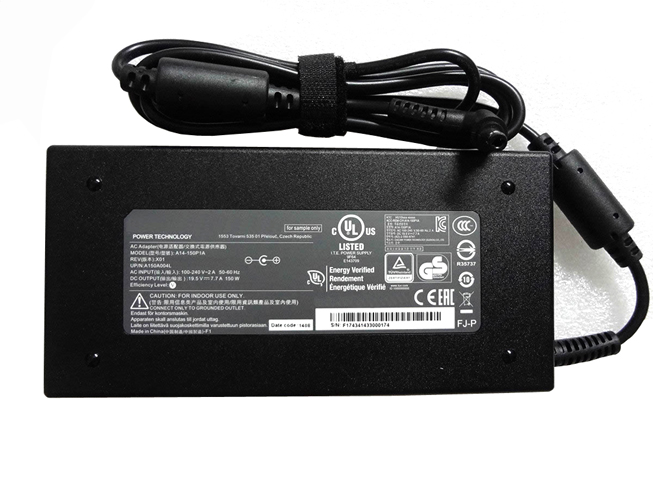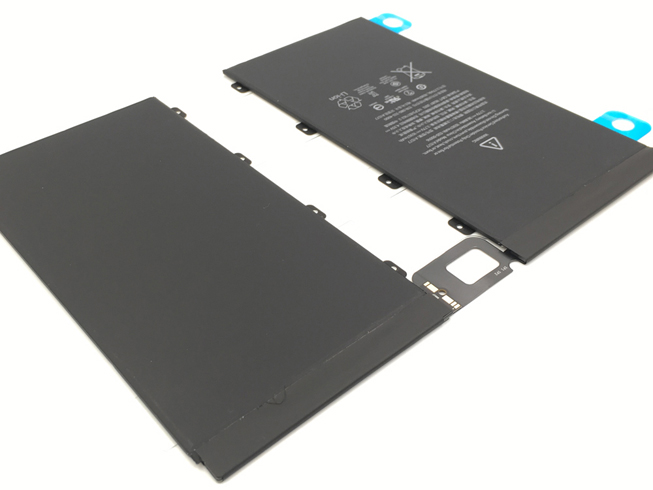This new Toshiba laptop battery for Toshiba V000131200 Dynabook EX/63J TX/65D Equium A200 is 100% compatible with your Laptop. Toshiba PA3793U-1BRS battery has passed strict quality assurance procedures to achieve international standards such as CE, UL Listed. High quality, Brand new & never refurbished. No memory effect. Any question or suggestion about this Toshiba batteries please Contact us so we can offer you the most convenient service.

New TOSHIBA PA3793U-1BRS laptop battery High Quality Battery [10.8 Volt (11.1 Volt compatible), 4400 - 5200mAh]
Replacement Battery>> Toshiba PA3793U-1BRS 10.8 Volt (11.1 Volt compatible) 4400 - 5200mAh
Replace the following part numbers:
PA3534U-1BAS PA3534U-1BRS PA3535U-1BRS PA3682U-1BRS PA3727U-1BRS PABAS098 PABAS173 PABAS174 TS-A200
Fits the Following Models:
Toshiba Dynabook TV/64KWH,
Toshiba Dynabook TV/65KPK,
Toshiba Equium A300D-13X,
Toshiba Equium A300D-16C,
Toshiba Equium L300-146,
Toshiba Equium L300-17Q,
Toshiba Satellite Pro P300-1CG
Toshiba Dynabook Satellite T43, T42 216C/5W,T41 200C/5W, T40 210E/5W;
Toshiba Satellite A200 Series; Toshiba Satellite A205 Series;
Toshiba Satellite A215 Series; Toshiba Satellite A300D Series
Toshiba Satellite A305 Series; Toshiba Satellite A305D Series;
Toshiba Satellite A350 Series; Toshiba Satellite A350D Series;
Toshiba Satellite A355 Series; Toshiba Satellite A355D Series;
Toshiba Satellite A500 Series; Toshiba Satellite A505 Series;
Toshiba Satellite A505D Series; Toshiba Satellite L200 Series;
Toshiba Satellite L300 Series; Toshiba Satellite L300D Series;
Toshiba Satellite L305 Series; Toshiba Satellite L305D Series;
Toshiba Satellite L350 Series; Toshiba Satellite L450 Series;
Toshiba Satellite L450D Series; Toshiba Satellite L455 Series;
Toshiba Satellite L455D Series; Toshiba Satellite L500 Series;
Toshiba Satellite L500D Series; Toshiba Satellite L505 Series;
Toshiba Satellite L505D Series; Toshiba Satellite L550 Series;
Toshiba Satellite L550D Series; Toshiba Satellite L555 Series;
Toshiba Satellite L555D Series; Toshiba Satellite Pro L550 Series...etc
RU: Toshiba PA3793U-1BRS
JP Store: Toshiba PA3793U-1BRS battery
Tablet-Akku: AKKU Für Toshiba PA3793U-1BRS, Ersatz für Toshiba V000131200 Dynabook EX/63J TX/65D Equium A200.
TOSHIBA
100% safe and cheap Toshiba PA3793U-1BRS laptop battery deals
Toshiba PA3793U-1BRS Battery Power your system. It is the best choose to get standby Toshiba PA3793U-1BRS battery for your laptop here,high quality li-ion cells, longer battery life, competitive price, 1 year warranty, 30 days money back and high quality of service.
www.uk-online.co.uk is your one-stop shop for Toshiba PA3793U-1BRS laptop batteries.
This Toshiba replacement battery pack is a 10.8 Volt (11.1 Volt compatible) 4400 - 5200mAh, rechargeable, removable, Li-ion battery designed to work with Toshiba PA3793U-1BRS. The Hi-Quality battery meets or exceeds original manufacturer specifications for the Toshiba PA3793U-1BRS Laptop Battery in quality, durability, and performance. Li-ion batteries do not suffer from the memory effect. They generally last between 300-500 charge/discharge cycles. All laptop batteries are tested for 100% quality control assurance. This battery for Toshiba PA3793U-1BRS includes a one year warranty. We offer a 30 day money back guarantee and fast shipping on all of our products.
toshiba PA3534U-1BAS battery for Toshiba Equium A200 Series Satellite A205 Series
Lenovo L13M4P61 battery for LENOVO EDGE 15 80H1 15.6inch
SONY VGP-BPS42 battery for SONY VAIO 11A SVF11N14SCP SVF11N15SCP SVF11N18CW
Lenovo 57Y6455 battery for Lenovo IdeaPad G460 G560 Z560 series
HASEE CQB904 battery for Hasee A410 A430 series
sony VGP-BPL18 battery for SONY VAIO-W W117 W127 series
SAMSUNG AA-PB6NC6W battery for Samsung NC10 NC10-11GP Series
Dell TRHFF battery for Dell Inspiron 15-5547 Maple 3C
IBM FRU_92P1163 battery for ThinkPad X60 X60s X61 X61s Series
ASUS A41-K56 battery for ASUS A46CM K56CM S505CM Series

























